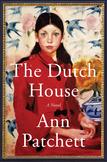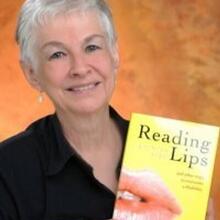Review: Ann Patchett’s liars and questionable saints
If Elna Conroy had not been a Catholic and had not taken the Bible seriously, especially the parts about following Christ and turning the other cheek, her life and that of her family would have followed a path entirely different from the tortuous one described in Ann Patchett’s The Dutch House.
When the novel opens, Elna has been missing for five years, leaving behind her 15-year-old daughter, Maeve, and 8-year-old son, Danny. The two are preparing to meet Andrea, who will become their stepmother. Maeve rightly believes that things will be difficult for them.
Praised for her simple, though elegant, writing style, Patchett is a best-selling author whose work has won numerous awards, including the prestigious PEN/Faulkner Award. She received a New York Times Notable Book award for her first novel, The Patron Saint of Liars (1992), which bears a striking resemblance to her latest.
Both novels concern Catholic women who wish to help an order of nuns in their work. Both books are set at similar times in the 20th century, and both feature splendid, somewhat ostentatious mansions that fall into disrepair and are restored.
More important, both novels also spotlight lying and its ill effects on characters who at best are unreliable narrators and at worst, just plain liars. In the first novel, it is Rose, the mother, who lies about being pregnant and commits what she identifies as a lie of omission. In this book, Danny commits lies of omission as he does not tell his sister how much he hates Elna for essentially leaving them to whatever fate throws their way.
One major difference between the two novels concerns the narration. The Patron Saint of Liars is told by three narrators from three points of view. Each view spins off from and informs the others. The Dutch House has one narrator, Danny, whose views develop as he grows older. His views also spin off of those of other characters, primarily his sister, Maeve, as the two try to unravel the past.
At first, Maeve serves as Danny’s protector. He was only 3 years old when his mother left and he has no memory of her. But after Danny grows up, Maeve experiences serious health issues, and he then protects her. In addition, his opinion of his mother changes as he learns more about her—or so he thinks.
Who are these women who seem like evil and good incarnate? Does one ever know another person?
We learn that Elna had planned to become a nun and was already a postulant when Cyril Conroy persuaded her to leave the order and marry him. After they married and bought the Dutch house, Danny was born and Elna supposedly read an article in Time magazine about Mother Teresa of Calcutta.
Elna’s sense of vocation seemed to return, and she planned to help Mother Teresa minister to the poor. But some say Elna miscalculated and wound up in Bombay. From there, she evidently wandered to California and other states where she volunteered in homeless shelters. She believes that “you have to serve those who need to be served not just the ones who make you feel good about yourself.” There is speculation that Elna is a saint. Whether that is a valid consideration is central to the novel.
“I think it’s hard for people like us to understand,” observes Sandy, one of the servants. “But when you think about saints, I don’t imagine any of them made their families happy.” As Danny sees it, “Taking care of someone who doesn’t know you doesn’t make you a saint.” He asks himself what kind of a person—let alone a mother—would desert her two young children for any reason, even out of a deep spiritual sensibility?
An overly long and winding plot corkscrews from present to past and back again—revealing, among other things, that in 1946, Cyril bought and restored the Philadelphia-area VanHoebeek mansion (a.k.a., the “Dutch House”) after the owners went bankrupt during the Depression. Elna often attended daily Mass and visited with the nuns when Maeve was in school.
The siblings attended Catholic elementary school, where Maeve was religious but Danny less so. Their father was Catholic but not particularly devout. When Elna disappeared, Maeve nearly died.
At Maeve’s insistence, Danny goes to medical school, but ends up a landlord and builder like his father. And like him, he also marries the wrong woman, though he remains very involved with his two children. Cyril was a distant father who mostly ignored his family, although it turns out that Cyril was more aware of his children than Danny realized—as was Elna, who unfortunately had not foreseen the coming of Andrea.
Andrea is thoroughly enamored of the Dutch house and its rounded glass front doors, held in place with wrought iron vines. She loves the exquisite ballroom on the third floor, the Delft Blue mantels in the drawing room, library and master bedroom, which was “said to have been pried out of a castle in Utrecht...to pay a prince’s gambling debts.”
Unlike the tall, dark Elna, who wears jeans and who is focused on religious matters, Andrea is a short, petite blonde. She is also materialistic and manipulative and wears pantsuits. Before anyone realizes it, she talks Cyril into changing his will, thereby making his successful business, multimillion-dollar Dutch house and all his assets hers.
When Cyril dies from a heart attack a few years after marrying Andrea, she admits her hatred for all things Catholic, refusing to allow Cyril to be buried in a Catholic cemetery because she does not want to “spend eternity” buried beside Catholics. She also fires the servants who raised Danny and Maeve.
She cheats the children (and possibly Elna) out of their rightful inheritance, insisting they fend for themselves. There is speculation as to whether Cyril and Elna are actually divorced, with hints dropped on both sides of the issue. (If they weren’t divorced, that would change the inheritance). There is also some question about the family connections of Andrea’s two young daughters.
Years later, when Andrea’s health deteriorates, one wonders whether Andrea is as vicious as she seems—and whether Elna is a saint or just another goody-two-shoes. And is there a difference? Who are these women who seem like evil and good incarnate? Does one ever know another person? These questions reverberate throughout the puzzle of this novel.
This circuitous plot develops through numerous flashbacks and subtly seeded questions in the storyline—which goes on to just as subtly suggest answers. Some of the answers stare Danny in the face, although he fails to recognize them until much later, when he hears from someone with another perspective.
It is difficult to decode the past, Danny tells Maeve, since it is colored by the perspective of the present. As an adult, Danny puts the idea in a statement that could serve as the novel’s theme: “We overlay the present onto the past. We look back through the lens of what we know now, so we’re not seeing it as the people we were, we’re seeing it as the people we are, and that means the past has been radically altered.” Danny realizes just how altered the past has become when this novel ends on an unexpected note that doesn’t make sense—at first.
This article also appeared in print, under the headline “A mansion of mystery,” in the Fall Literary Review 2019, issue.











